Trimbakeshwar Jyotirling (Marathi:त्रिंबकेश्वर ज्य्होतीर्लिंग, Hindi:त्रिम्बकेश्वर ज्योतिर्लिंग) is on the banks of Gautami near Nasik in Maharashtra. Of the 12 JyotirLingas of Lord Shankara, the 10th is known as Tryambakeshwara.
Trimbakeshwar Temple - Abstract
Trimbakeshwar: Jyotirling
Important Festivals:
- Sinhastha Kumbha Mela
- Godavari day
- Nivrutti Natha festival
- Rathayatra of Trimbakeshwar
- Mahashivaratri
.
There are three main pujas performed every day.
- Morning between 7:00 AM to 9:00 AM
- Afternoon puja at 1:00 PM
- Evening between 7:00 AM to 9:00 PM
During the night worship, sheja arti is carried out and a silver mask placed on a bed in a hall of mirrors.
Every Monday between 3:30 and 5 pm, a palki (palanquin) carries the silver panch mukhi mukhota (five faced image of Lord Trimbakeshwar) from the temple complex to nearby Kushavrata Tirtha and back. An abhishek is performed there. The palki processions carry a golden crown during Shivaratri, Kartik Purnima and Dussehra. The special golden crown of the Lord donated by the Peshwas is also shown to devotees once a week on every Monday at 4:30 pm
.
- Trimbakeshwar Temple is an ancient shrine; however the current structure is a result of the reconstruction efforts undertaken by the Peshwa Balaji Bajirao in mid 18th century.
- The work of constructing the present temple of Trimbakeshwar was begun by Shrimant Balaji Bajirao alias Nanasahib Peshawe in 1755 in the first half of the Margashirsha month (around December) and was completed in 1786.
- To the rear of the temple Gangamandir, Shrimant Peshawa has built a big caravansary where Rama and Karpureshwar Mahadev are enthronedIt took 31 years to construct the temple and the cost of 16 lacks then.
- There are two different routes to get to here. From Nasik to Trimbakeshwar, it is only 18 K.M. This route was built by the help of Shri Kashi Nath Dhate in A.D. 871.
- Trimbakeshwar Muncipal Corporation, TrimbakeshwarThe Municiple Corporation was established in Trimbakeshwar in 1866 A.D. The corporation is seruing and taking care of the devotees and tourists for 120 years
Architecture:
- This is East facing temple and surrounded by four sides with stone walls.
- Trimbakeshwar temple has 5 domes and each tomb has five golden pots. The flag of the temple is made of the 5 substances
- The temple is built of black stone in the Nagara style of architecture and is enclosed in a spacious courtyard.
- The sanctum internally a square and externally a stellar structure houses a small Shivalingam – Triambaka. The sanctum is crowned with a graceful tower, embellished with a giant Amalaka and a golden kalasha.
- In front of the garbagriha and the antarala is a mandap with doors on all four sides. Three of these doorways are covered with porches and the openings of these porches are ornamented with pillars and arches.
- Curvilinear slabs rising in steps form roof of the mandapam. The entire structure is ornamented with sculptural work featuring running scrolls, floral designs, and figures of gods, Yakshas, Humans and Animals.
- The Shivalingam is seen in a depression on the floor of the sanctum. Water constantly oozes out from the top of the Shivalingam.
- Usually, the Shivalingam is covered with a silver mask but on festive occasions a golden mask with five faces, each with a golden crown covers it.
.
Temple is managed by Shri Trimbakeshwar Jyotirlinga Trust. However, pujas are controlled by purohits
.
By Air: Nearest airport is Nasik 39 kms.
By Rail: Nearest railhead is Nasik Road 44 kms on Central Railway.
By Road: Bombay – Trimbakeshwar 180 kms.
Nasik – Trimbakeshwar 28 kms.
State Transport buses ply between Nasik and Trimbakeshwar f requently
There are two stories related to Trimbakeshwar. One story is about Simhastha Parva according to Padma Puran.
Centuries ago the gods and goddesses used to roam in India. They helped sages and people living here at the time of various difficulties, especially from the demons who were a nuisance. However, this fight generally caused heavy damages to both, gods and demons. It was decided to settle the issue of supremacy once for all. They agreed that whosoever captures Amritakumbha (immortal nectar) will be the victor. Amritakumbha (pot with immortal nectar) was on the sea bed.
The gods were successful in getting nectar by fooling the demons. When the demons came to know of this, they launched a violent fight for Amritakumbha (immortal nectar). In process drops of nectar fell at four places – Haridwar, Prayag, Ujjain and Trimbakeshwar. Trimbakeshwar is one of the four places where drops of heavenly nectar fell. At that time was when the planet Jupiter (Guru) had entered the hemisphere of Leo (Simha). And as this same planet enters the hemisphere once in 12 years, the Kumbh Mela is held once in 12 years in the respective areas.
The other story is equally interesting. Sage Gautam used to live in this area. Once there was severe drought for 24 years. To come to the rescue of people, sage Gautam worshipped Lord Varun (rain god) and the god was pleased. He blessed the sage with the gift of plenty of rains in the area. This made the area lush green and full of water.But this made other sages jealous of Gautam. They sent a cow to destroy the granary of Gautam. When Gautam tried to shoo her away, she was injured and died. Waiting for such an opportunity, other sages charged Gauam of great sin of killing mother cow and made him go for penance. He was asked to worship Lord Shiva and bathe in Ganga.
Gautam appeased Lord Shiva who in turn asked Ganga to come to Gautam’s place. Gauatm and Ganga prayed to Lord Shiva to come here with Parvati and stay with them. They made Lord Shiva agree to the request and he decided to settle here. Here the river Ganga appeared in the form of river Godavari. Hence it is also known as Ganga Godavari or Gautami Godavari. People here worship the Godavari as Ganga. Lord Shiva also resides here in the form of Trimbakeshwar.
Trimbakeshwar is the 10th sacred Jyotirlinga among Jyotirlinga circuit. This hill station like place lies in the formidable shadow of Brahmagiri hills in the Sahyadri range and it is the source of holy river Godavari. The place is also known for its Simhastha Kumbha Mela, which comes every 12 years as per the Hindu calendar.
Significance of the Trimbakeshwar Jyotirlinga:- It’s a place of Tri-Sandhya Gayatri;
- A place of the first Nath of Nath Sampradaya consisting of Gorakhnath and others;
- A place where Nivrittinath was made to imbibe the holy knowledge by his Guru Gahininath;
- A place where Nivrittinath made his brothers and sister attain the self by his preaching.
Other Significant Places to visit near Trimbakeshwar Temple:
This is a group of Hinayana Buddhists and Jain Caves which was carved with the funds of Jain Kings, between 1st century BC and 2nd century AD. These are located on a tableland on Trirashmi Hill in the mountains of Pandavleni, 8 km south of Nasik in Maharashtra.
There are 24 Viharas and 3 Chaityas in these caves. Cave No. 3, a large Vihara or monastery, has some beautiful sculpture. Cave No. 10 is almost same but much older and finer in detail. It, along with Cave No. 18, is Viharas or monasteries. Gautamiputra Vihara, Nahapana Vihara and Mahayana Vihara are rated the best among all of them.
The caves also have the statue of Jain Tirthankara Vrishabhdeva besides the statues of Buddha, the icons of Boddhisatva, Veer Manibhadraji and Ambikadevi. These caves were used to deliver the sermons to the desciples. Attractive water tanks have also been carved out in these caves.
These caves house 27 inscriptions, belonging to Satvahana and Kushana period. The inscriptions in caves no. 3, 11 to 15, 19 & 20 are readable. No. 15 talks about last King Shri Yad. Some inscriptions have also mentioned Bhatt Palika, Satkarni, Pulumavi and other kings. No. 16 is a high-rise Vihara which has 16 rooms in it. One interesting thing about these caves is that these are believed to be dug out by Pandavas (Mythological Warrior Brothers) during their Vanavasa(Shelter in the woods).
Some caves are well-connected with other caves through stone-cut ladders starting from the bottom of the hill. You can also access the peak of the hill in 20 minutes by trekking but it may be risky.
The oldest historical place in Nasik is Trirashmi Leni. This is also known as Pandav Caves or the Caves of Pandavas. But contrary to the popular belief, the images here don’t belong to Pandavas but to Buddha.
.
A sacred place for the Jains is the Teertharaj Gajapantha- Chamber Caves situated on the top of a small hill at Mhasrul in Nashik City. The famous caves staircases are built in black stone that leads to the temple and offers a panoramic view. This is a very serene place, conducive for meditation. Gajapantha Teertha includes a caravanserai, a small hut the foot of the hill and a temple at the top of the Gajadhwaja Hillock. It s said that the caves got the name “Chamer Caves” or “Chambhar Caves” from King Chamaraja in the regional language.
.
Dudhsagar Waterfalls in Someshwara is regarded as one among the best in the entire world itself. The waterfalls reach its zenith during monsoon season when the cascade displays plenty of water in it. The 10-meter stretch of this cascade is often crowed with young people since it helps to evoke the adventurous spirit in them. Another remarkable fact about this lovely falls is its creamy white water that gained it with the pretty name Dudhsagar. Carved steps on the rocks make access to the top of this lovely spot effortless.
.
Deolali Camp is an important Indian military center. Deolali camp which is one of the oldest military centres in India is located 16 km away from Nashik. The centre was set up by the British in 1861 which stands surrounded with gardens, playgrounds and wide roads prove its uniqueness. An officer of the rank of Major General holds the position of the head of the Artillery school here. Beyond Military centre Deolali market is famous for shopping. Also there is a famous temple of lord Khandoba, hence the hill is popularly known as Khandobachi Tekadi.
.
Situated at a distance of 8 km from Central Bus Stand on the suburbs of Nashik, Mukti Dham Temple is a beautiful marble temple complex, built by Late Shri JayramBhai Bytco. An abode of most of the gods and goddesses of the Hindu pantheon, this splendid shrine displays the facsimile of all the 12 Jyotirlingas of India. It s a magnificent piece of architecture, made with marble form Makran in Rajasthan, and its sculptors. Unique to this temple are eighteen chapters of Bhagavad-Gita written on the walls.
It is believed that a holy Darshan of this shrine provides as much virtue as a visit to four holy places, which makes this magnificent shrine a crowded pilgrim centre. This delicate piece of architecture with its glittering whiteness embodies its serenity and sacredness
.
The most important place in Panchavati is Ramkund, which is at a distance of 1km from Central Bus Stand. It is so called because Lord Rama is believed to have taken bath there. In Hindu culture the body after death if dedicated to Fire and the ashes are then flown in to Godavari, Ramkund is the place where ashes are set free in the water. A dip in this sacred kund is considered very religious. Situated nearby is Gandhi Lake (Talab) having a memorable monument made out of white marble, in memory of the Father of the Nation. The ashes were dropped in Ramkund after Gandhiji passed away on 30th January 1948.
.
Bhakti Dham is situated near Dindori Naka, at a distance of 2km from Central Bus Stand in Nashik. This place is renowned for various temples built in the premises where the entire area gives an impression of a singular shrine and among the various holy places of worships. Bhakti Dham offers a wide range of religious books on sale and in recent years it has been possessed the privilege of an ideal place of Vedic studies and research.
.

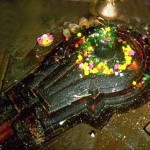
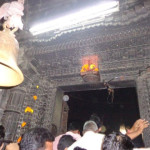
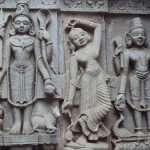
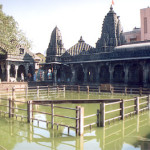
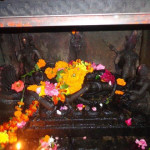
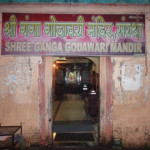
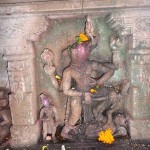
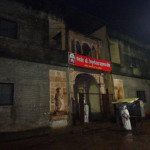
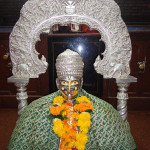
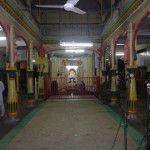
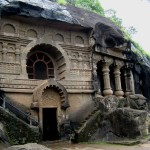
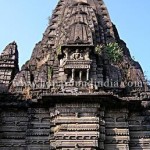
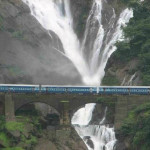
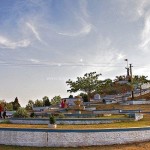
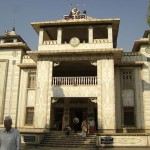
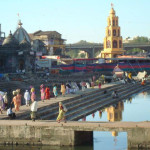
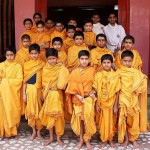
No comments yet.